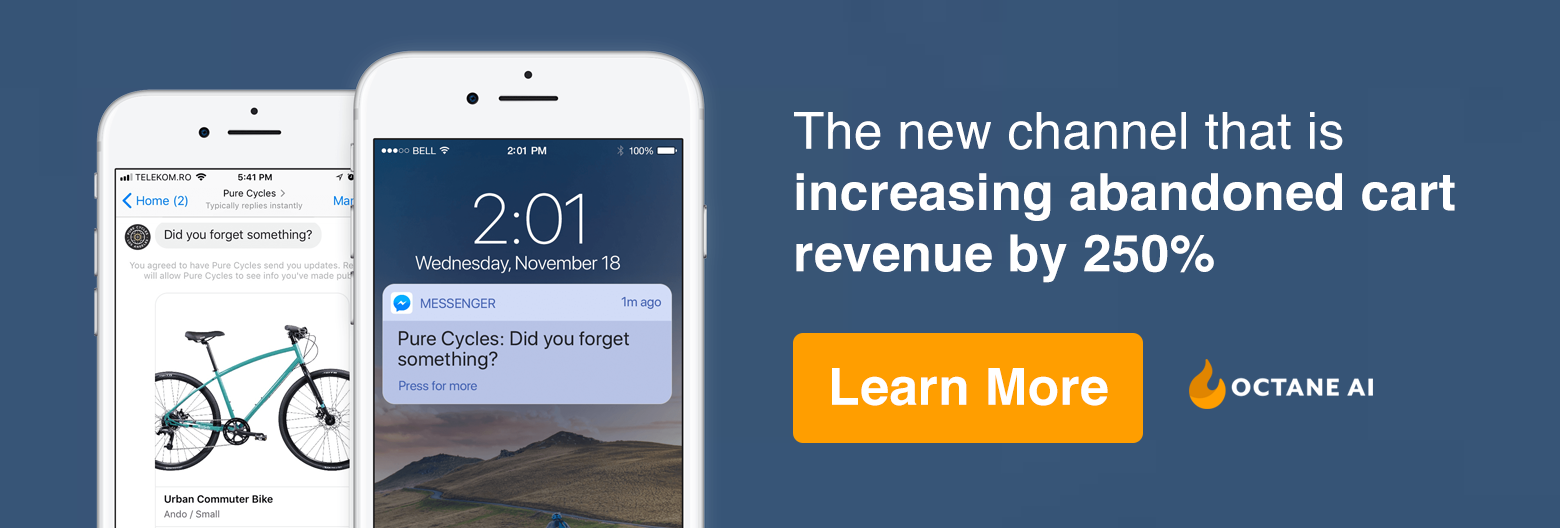Today’s consumers most desire convenience and efficiency when shopping, driving retailers to devote more effort to streamlining the customer journey. As a result, more and more retailers are pursuing an emerging retail theory called “friction-free commerce,” where the goal is for customers to shop and transact in as few clicks or steps as possible. (It’s one of the driving forces behind voice-activated shopping, instant order buttons, and chatbots.)
Retail friction can take many forms. For example, the checkout process is a major cause of friction, with research showing that 68 percent of online shopping carts are abandoned. If customers are forced to fill in too many fields, move through too many pages, and perform too many actions, they will lose patience and leave. Surprises at the end of the checkout process, such as unexpected costs or long checkout lines also lead to high abandonment rates.
Retailers that make the customer experience as easy, quick, and hassle-free as possible consistently win more business. This includes streamlining processes for ordering, checkout, delivery, returns, and customer service. Popular retailers like Apple and Warby Parker are great examples of how the use of new technology and concepts can enable successful friction-free commerce for shoppers.
Apple
Apple has fundamentally altered the in-store shopping experience in this modern era of retail. Apple stores, which make shopping easier through mobile technology and well-trained sales associates, are a model of frictionless commerce offering unparalleled customer service and seamless checkout in brick-and-mortar retail.
Apple continues to innovate and transform its stores to provide leading-edge experiential and streamlined shopping experiences. Equiping sales associates with smartphones and tablets to expedite the checkout process eases customers’ shopping experience, allowing them to quickly complete their purchases.
Sephora
Beauty retailer Sephora is leveraging AI and AR to transform retail and help customers buy cosmetics. They’re taking a huge step in ecommerce innovation by rolling out an AI-based application that offers a hybrid shopping experience, helping consumers try on makeup virtually and find specific shades to match their skin tone. This beauty service, Color IQ, uses digital devices to scan someone’s skin to find the right shade for foundation, concealer, lip and powder product recommendations.
Sephora’s growing success is attributed to marrying the physical retail experience with digital and leveraging strong consumer insights with new technologies, while streamlining the customer journey.
Nordstrom
Staying true to its mission to provide great service, speed, and convenience, Nordstrom does it all to please their customers: high quality product recommendations, free shipping, and the latest retail technologies. Nordstrom nails the personalized in-store experience, tailoring product recommendations to customers and making it easier for people to get what they want on their own terms.
Nordstrom also recently launched its inventory-less clothing stores in Los Angeles, merging the gap between the online and in-store experience by linking the online sales and in-person attention from stylists. Seen as a “service hub,” customers can return or pick items up at the store that they bought online, speak with personal stylists and get clothes tailored.
Amazon
Online retail giant Amazon has been the biggest leader in innovating the customer experience. Revolutionizing speedy delivery options with Amazon Prime, it continues to push the streamlined delivery envelope with Prime Now, which gives customers one-hour and two-hour delivery options.
Reducing the annoyances of in-store checkout has also become a primary focus of retailers, with Amazon’s new checkout-free grocery store, Amazon Go, the most extreme example. Eliminating the need for customers to wait in line for cashier check-out or using cash to pay for items plays into the growing trend of brands using in-store technology to improve customers’ shopping experiences. Additionally, Amazon’s acquisition of Whole Foods shows that the company is serious about bringing friction-free commerce to the grocery business.
Starbucks
Removing friction and streamlining the checkout process is a primary reason for deploying mobile payments. Mobile shopping, which originally involved tedious manual typing of credit-card numbers, has been simplified by mobile apps and wallets.
Starbucks is the prime example of a store killing it in the mobile payments area. In fact, mobile payments now account for 30 percent of Starbucks transactions. And Mobile Order and Pay, a feature that lets customers order with their smartphone via Starbucks’ app and skip the line, accounted for 9 percent of transactions. The wide adoption of their app, providing quick and more personalized experiences, has led to more customer loyalty and even more sales.
Warby Parker
Everything about Warby Parker, from the product to the store’s experience, is designed with the customer in mind. Although Warby Parker is edging closer to a traditional retailer with countless new brick-and-mortar stores, their use of technology streamlines the customer experience and purchasing process.
What truly sets Warby Parker apart from others is their unique POS (point of sale) system and tablet-carrying sales associates that engage one-on-one with the customer. The setup lets shoppers enter their prescription info online, charges them only when the product arrives, and equips sales associates with all data related to a customer, including a complete history of each in-store shopper, allowing for shopping experiences that are both simple and personal.
Splash photo by Brooke Cagle on Unsplash


